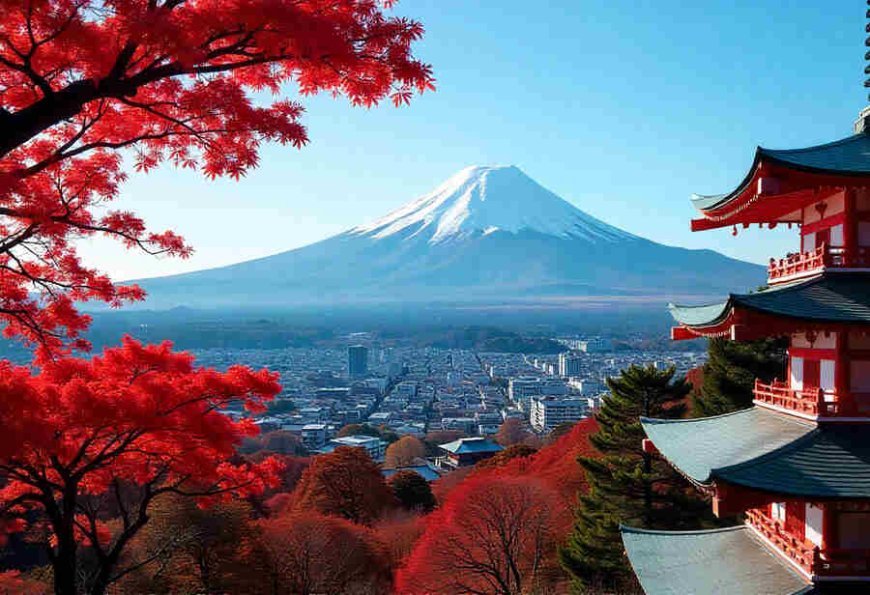Japan Releases New Travel Guides Highlighting Exciting Bike Rides And Scenic Road Trips For Explorers Seeking Unique Experiences


Japan has experienced a remarkable boom in tourism since it relaxed its COVID-19 entry restrictions, attracting a record 20 million international visitors in the first half of 2025. This surge is driven by increased accessibility through government investment in infrastructure and affordable accommodations, alongside a growing interest in exploring beyond the traditional Golden Route of Tokyo, Kyoto, and Osaka. Travelers now seek more authentic, budget-friendly, and immersive experiences, supported by new travel guides that highlight lesser-known destinations, cultural insights, and unique activities across the country.
Japan’s tourism has experienced a remarkable surge since the country lifted its COVID-19 travel restrictions in 2022. In the first half of 2025 alone, Japan welcomed a record 20 million international visitors, according to the Japan National Tourism Organization. Although Western tourists still represent a smaller portion of this number, their visits are rising steadily. For example, travelers from the United States increased by over 25% in the first six months of 2025 compared to the same period in 2024.
Most visitors continue to follow the well-known Golden Route, which includes Tokyo, Kyoto, Osaka, and the surrounding areas. These destinations remain popular for good reason, offering iconic sights, rich history, and vibrant urban culture. However, new travel guides are encouraging tourists to step off the beaten path and explore less familiar parts of Japan. This trend reflects a growing desire among travelers to experience authentic, local culture rather than just the well-trodden tourist hotspots.
Many travelers dream of visiting Japan, and Tokyo, Kyoto, and Osaka often top their lists thanks to pop culture and social media influence. However, adventurous visitors seek more immersive and unique experiences beyond these cities. Recently published pocket-sized travel guides address this demand by including topics such as sustainability, LGBTQ+-friendly travel, and budget-friendly options alongside practical information about attractions and transportation.
A widespread misconception portrays Japan as an expensive destination, discouraging backpackers and spontaneous travelers from exploring freely. In reality, Japan offers a variety of travel options that suit different budgets. Visitors can enjoy the country on an adventurous, affordable level rather than only as luxury tourists.
Several factors have contributed to making Japan more accessible in recent years. The relatively strong U.S. dollar in 2024 increased purchasing power for American travelers. At the same time, the Japanese government invested heavily in infrastructure, including affordable hotels and social accommodations. These improvements helped lower costs and expanded lodging options, making Japan easier to navigate and enjoy for a broader range of visitors.
Travel guide publishers have responded to these changes by releasing titles focused on helping travelers explore beyond the usual tourist centers. For example, two new guides launching in October focus on the best bike rides and road trips across Japan. These books offer detailed itineraries that range from short day trips to longer multi-week adventures, helping visitors discover the lesser-known islands and regions outside Honshu. They include practical details like terrain descriptions and bike rental information to support more independent and active travel styles.
These guides reflect a broader shift in travel habits that started during the pandemic. Many people now prefer slower, more immersive experiences that allow deeper connections with local culture and nature. This trend has reshaped how visitors approach their time in Japan, moving away from rushed sightseeing to thoughtful exploration.
In addition to practical guides, publishers are releasing travel journals and experiential books that encourage travelers to engage creatively with their trips. One such release includes an illustrated planner with packing lists, budget trackers, and space for journaling up to three weeks of travel. Another guide highlights 100 must-do experiences, from bowing to Nara’s sacred deer to diving into the electric otaku culture of Akihabara. These books cater to diverse interests such as food, technology, and outdoor adventure, while also celebrating Japan’s most iconic features like Mt. Fuji, sushi, and the bullet train.
Small, charming details also play a role in enriching visitors’ experiences. For example, beautifully designed manhole covers showcase local artistry and add an unexpected layer of fascination to urban explorations. These kinds of insights help travelers see Japan’s culture in fresh and inspiring ways, moving beyond conventional tourist advice.
Cultural books further enhance understanding of Japan by exploring traditions and lifestyle. One new title delves into the cultural roots of the popular KonMari method, offering essays on Japanese food, manga, pottery, hot springs, and more. It introduces readers to diverse aspects of Japanese life, from the role of shrine maidens to fandom culture and the precision of the tea ceremony. This perspective helps travelers appreciate Japan’s aesthetic and cultural depth, inspiring them to visit gardens, try local snacks, and notice the small details that define the country.
Another perspective comes from an English teacher turned local expert who advocates for the healing benefits of Japan’s traditional hot springs, or onsens. Living with skin sensitivity, she found relief and relaxation in these natural baths and now shares favorite onsens and historic inns across all 47 prefectures. Her guide emphasizes boutique, family-run accommodations that often go unnoticed by mainstream booking sites. These include traditional timber farmhouses, Kyoto townhouses, and cozy bed-and-breakfasts, providing authentic lodging experiences.
Onsen culture holds a special place in Japan’s way of life. Some visitors engage in onsen toji, a healing practice involving extended stays at hot springs to restore both body and spirit. Guides like this aim to ease newcomers into the onsen experience by explaining cultural norms and offering practical advice, recognizing that communal bathing can feel intimidating at first.
Japan’s tourism has surged to record levels in 2025 thanks to eased travel restrictions, improved infrastructure, and growing demand for authentic, affordable experiences beyond the usual tourist routes.
Across all these new books and guides, the message remains clear: Japan offers far more than its famous landmarks. Visitors can explore hidden corners, discover unique cultural experiences, and engage deeply with the land of the rising sun. With growing infrastructure and diverse travel resources, Japan invites travelers to look beyond the familiar and experience the country in richer, more meaningful ways.
The post Japan Releases New Travel Guides Highlighting Exciting Bike Rides And Scenic Road Trips For Explorers Seeking Unique Experiences appeared first on Travel And Tour World.






